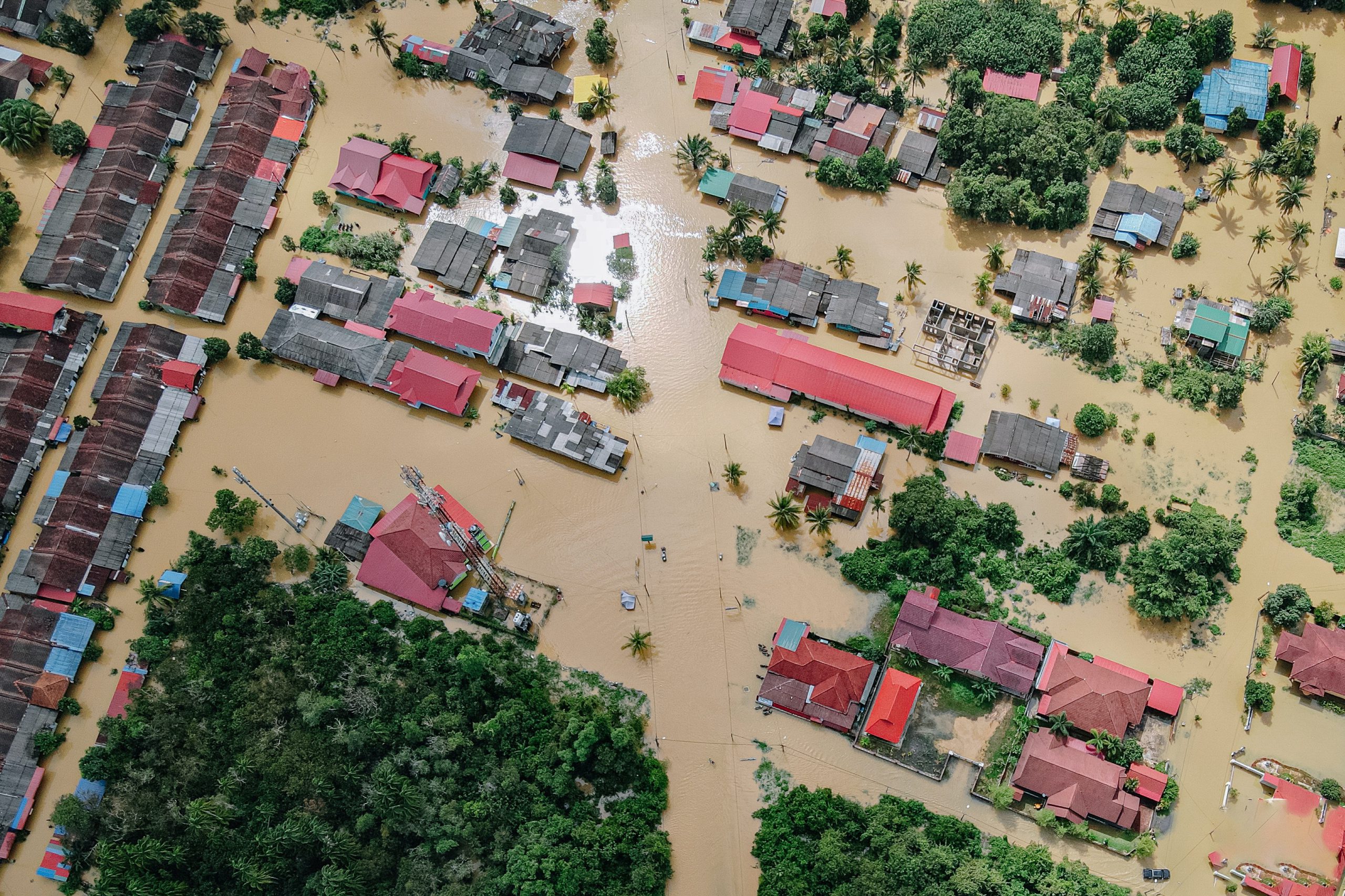
Climate hazards and extreme weather: A call for urgent action
According to the United Nations, climate hazard-related disasters have risen significantly, with over 7,000 incidents between 2000 and 2019. These events impacted 4 billion people and caused nearly $3 trillion in losses. This surge is primarily due to extreme weather events. If global temperatures continue to rise and net-zero targets aren’t met by 2050, 10% of the world’s economic value may be lost.
REPORTED DISASTERS
TOTAL DEATHS
TOTAL AFFECTED
US ECONOMIC LOSSES
1980-1999
4,212
1.19 million
3.25 billion
1.63 billion
2000-2019
7,348
1.23 million
4.03 billion
2.97 billion
Empowering Climate Resilience: ICARIA’s Asset-Level Modeling Approach for Sustainable and Cost-Effective Adaptation Solutions
In face of this situation, ICARIA aims to promote the use of asset-level modelling framework to better understand climate-related impacts and reduce the risk by providing sustainable and cost-effective adaptation solutions.
Hazards
Assets/services
Tangible impacts
Tangible impacts
Developing and Replicating Climate Adaptation Solutions
ICARIA researches three European case studies to understand climate impacts and develop adaptation solutions. These include two Mediterranean coastal areas – Barcelona Metropolitan Area and the South Aegean Archipelago – and Salzburg, Austria, all facing severe climate challenges. The project assesses solution replicability across these regions and five additional areas, ultimately providing regional-scale adaptation scenarios accounting for climate and socioeconomic factors.
1. Implementation phase
Hazard Modeling
Scenarios definition
Trials
Impact & Resilience Assessment
Adaptation measures
- Adaptation measures
- “best case study scenarios”
- Good data availability
- Well-known climate hazards and impact assessment methods
The first assessment focus on the best-known climate hazards of each case study and on the potentially affected assets for which there is more knowledge and data availability. The results from this stage could be used “as is” for operative decision-making.
2. Replication phase
Hazard Modeling
Scenarios definition
Mini trials
Impact & Resilience Assessment
Adaptation measeures
- Less resources
- Suboptimal data availability
- Coarse climate data
- Limited data/knowledge/tools for hazard & impact assessment
The second cycle of implementation focus on other disasters and assets historically less studied, completing the available information. Artificial Intelligence (AI)-based techniques could be used for filling data gaps. This phase serves to validate the replicability of the tools implemented in the Trials in other regions and under data limitations.
3. Exploitation phase
- Comunidad Valenciana (ES)
- Region of Central Macedonia (GR)
- Regione Campania (IT)
- Upper Austria (AT)
- Crete (GR)
- Naples Metropolitan Area (IT)
- Greater London (UK)
The project also assesses the replicability of the proposed solutions, first within the different case studies and then in five other selected regions: Great London in the United Kingdom; the Vega Baja region in the Autonomous Community of Valencia in Spain; the central region of Macedonia, the South Aegean region and Crete in Greece; the Campania region and the Metropolitan Area of Naples in Italy and the region of Upper Austria.
Key outcomes
Technological results:
- Climate Multi-Hazard modelling tools
- Holistic climate resilience assessment tool
- Portfolio of adaptation solutions
- Decision Support System (DSS) for adaptation to extreme and compound events with cost-effective measures.
Scientific results:
- Project framework for climate multi-hazard holistic assessment at a regional level
- Regional climate projections in long term considering the local socio-economic dimension
- Methods for mending the data gaps and uncertainty analysis for the risk and impact models
- Climate-related multi-risk tangible impact assessment method
- Multi-risk and resilience assessment for the 3 case studies
- Replication, sustainability and explorations of ICARIA results.
CURRENT
SCENARIO
Data
- Climate
- Asset
- Vulnerability functions
Multi-hazard modelling
Assessment
- Risk
- Resilience
Results
- Expected annual damage (EAD)
- Risk maps
- Resilience metrics
BUSINESSAS USUAL (BAU)
Data
Multi-hazard modelling
- Climate modeling for long term projections
Assessment
Results
ADAPTATION SCENARIOS (MANY)
Data
Multi-hazard modelling
- Climate modeling for long term projections
- Portfolio of adaptation solutions
Assessment
Results
Scenario comparison
Results
- Cots-benefit analysis (CBA)
- High Risk reduction (%)
- Resilience increase
- Best scenario
Users
- Decision makers
- Asset and service managers
- Other stakeholders

